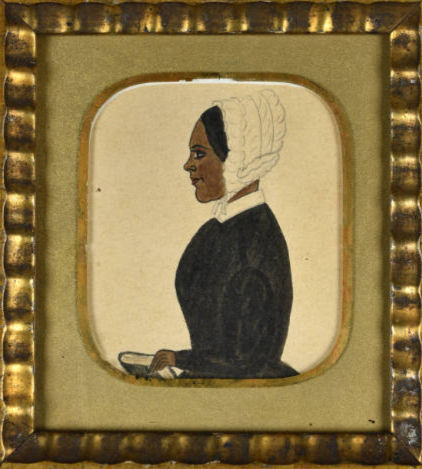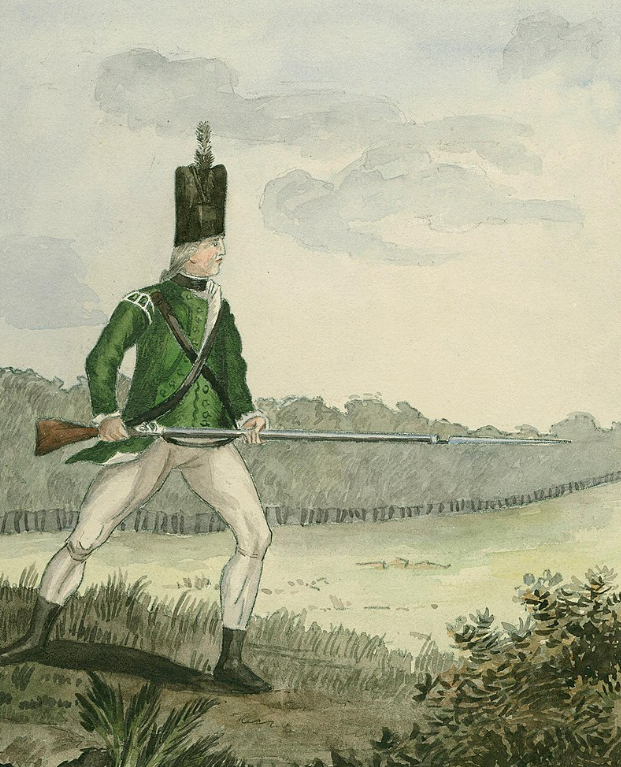Promise or Peril? Elsy Murray, a Freedom Seeker from Princeton
- Denise Rompilla
- Mar 11
- 5 min read
Updated: Mar 25

Elsy Murray sought her freedom from enslavement in New Jersey on February 13, 1818.
According to a newspaper advertisement published in the Freedonian, she was “about 20 years of age, 5 feet 6 or 7 inches high, of about the middle grade of blackness”. Peter Bogart, her enslaver, made note that Elsy ”reads very well, and is intelligent”. Elsy’s literacy and education could be the result of Bogart’s involvement with Princeton’s Theological Seminary. He was the seminary’s steward, and teaching Elsy how to read would be seen as a charitable act. New Jersey’s 1788 revision to the 1786 Act provides another explanation. The revision required “every master or owner to teach their slave or servant under the age of 21 to read, or be charged a five-pound fee”.
Bogart then went on to describe in great detail what Elsy was wearing when she left, from her green silk bonnet down to her plum colored shoes. Although the advertisement was posted over two months later on April 30, Bogart still remembered these details from the day she left. Maybe he waited a couple of months because he expected her to return. He stated that she had been given a two day pass to visit her brother, suggesting perhaps that Elsy had made similar requests before. For Elsy, however, this ordinary request is exactly the cover she needed. There must’ve been a level of trust between them based on the pass and how long he waited to officially post her absence.
The atmosphere of New Jersey post-war was initially one of anti-slavery sentiment. For instance, the General Assembly of New Jersey passed the 1786 Act after the Revolutionary War, which freed three enslaved men who assisted in the war effort. However, the war resulted in a shortage of “white laborers and a simultaneous increase in demand for labor to rebuild homes and restore farms—this reminded white New Jersey residents how dependent they were upon enslaved labor” (Legislating Slavery in New Jersey). As a result, the atmosphere in the state shifted from one outright emancipation to subtle and slow improvement of enslaved people’s circumstances.
On February 15, 1804, New Jersey’s Gradual Abolition Act declared that “every child born of a slave, within this state, after the fourth day of July next, shall be free”. (New Jersey Legislative Acts). If Elsy was 20 years old in 1818, her estimated year of birth would be 1798, meaning the Gradual Abolition Act didn’t include her. However, there was a
catch within the law that required these children to work as servants to their mother’s owner until the age of 21 for women and 25 for men. Essentially, enslaved people became divided by this law. If they were born after Independence Day in 1804, they would be free after a 21 or 25 year term of enslavement, but for those born before that day, there was no promise of freedom. Elsy Murray was in the group of enslaved people that couldn’t rely on New Jersey’s gradual emancipation and the environment of the state didn’t exactly align itself with abolition. After all, New Jersey was the last state in the North to abolish slavery in 1866.
The 1804 Act for gradual emancipation contributed to the popularity of the north to south migration of enslaved people. This was used to go around the law and profit off of slavery before it was truly abolished. In this way, Peter Bogart may have decided to sell Elsy south around this time. Living in a small town such as Princeton, she may have overheard news about this or read advertisements related to the slave trade and know that sales were increasing. This increase led to New Jersey passing laws in 1812 and 1818 to limit the selling of enslaved people by requiring their consent. However, consent was often forced or forged by enslavers as “surviving sale records reveal that 41 percent of slaves ‘consented’ to removal to the Deep South” (Legislating Slavery in New Jersey). Additionally, New Jersey’s 1786 Act prohibited the importation of enslaved people into the state that had arrived to the country after 1776, effectively regulating the
international slave trade. However, the Act did little to regulate the interstate slave trade that thrived in the wake of Gradual Emancipation. It separated families and disrupted communities of enslaved people. This could be true for Elsy who had a brother living in Piscataway. Also in 1818, large numbers of women, children, and men from New Jersey were being put on ships and sold south. This was occurring in precisely the same year Elsy left. It’s possible that Elsy feared she would be coerced and shipped off too unless she sought freedom her way.
African colonization was another movement that gained traction during this time and
directly affected the lives of enslaved people. By 1812 when Princeton’s Theological Seminary opened, enslavement was still an active and intrinsic part of life. Anti-slavery sentiment was less prominent in areas of New Jersey that needed rebuilding post war or needed to fill labor shortages on farms and plantations. And the process of gradual emancipation kept those born after 1804 tied up in enslavement anyway due to the working term. In 1816, the American Colonization Society was founded. Although the Society was founded in Washington, D.C., “the first public meeting to discuss colonization reportedly occurred in Princeton...[the] gathering was led by Presbyterian pastor Robert Finley and included most of the professors from the Seminary” (Princeton Seminary and Slavery). Peter Bogart was steward eter Bogart was steward of the Princeton Theological Seminary, which had direct ties to this colonization movement. It’s
likely that Bogart felt that it would be in Elsy’s best interest to be a part of this new colony in Africa. Also, this movement thwarted a real and enduring potential to be free as its goal was to “prevent the emergence of a large free Black population in the United States [by] encourag[ing] the emigration of freed slaves to a colony in Africa” (Legislating Slavery in New Jersey). With Elsy’s direct connections to this movement through her enslaver, it provides another strong explanation as to why she went away in 1818.
The outcome of Elsy Murray seeking her freedom is unclear. She likely stayed with her
brother in Piscataway as the posted advertisement states that “she had a brother living in that quarter”. She would’ve had to rely on individuals she trusted to hide her and get her to wherever she wanted to go safely. Warnings in her ad such as “All persons are forewarned harboring her at their peril” suggest that assistance was common. However, the large number of newspaper advertisements seeking to capture individuals and reinstitute them in enslavement reveals that this was a community effort. If Bogart got his community to help him catch her, she might make a good profit particularly as she was educated and “an excellent house wench”. She managed to elude Bogart and his community network for at least two months. It’s possible Bogart let go of the African colony relocation idea for Elsy in favor of turning a profit on her.
For Elsy Murray and other enslaved people in 1818, they lived within a “surveillance
system, bolstered by travel passes, curfews, and print ads, [which] meant that anyone of African descent was suspicious. Rewards incentivized slave-catchers and criminalized Blackness” (Fugitive Slaves). While enslavers relied on their neighbors in this vain, freedom seekers had community as well to help them. To be able to evade suspicion based on the color of their skin alone, they would need accomplices within the Underground Railroad system. In Elsy’s case, we know that at the very least she had a brother living nearby within the state that could shelter her.
Slavery would not be fully abolished in New Jersey until 1866 and Elsy lived with no
promise of freedom having been born just a few years before July 4, 1804. Regardless, the life and experience of treading the precarious nature of post Revolutionary War freedoms is evident through Elsy Murray’s short ad in The Fredonian.



Comments